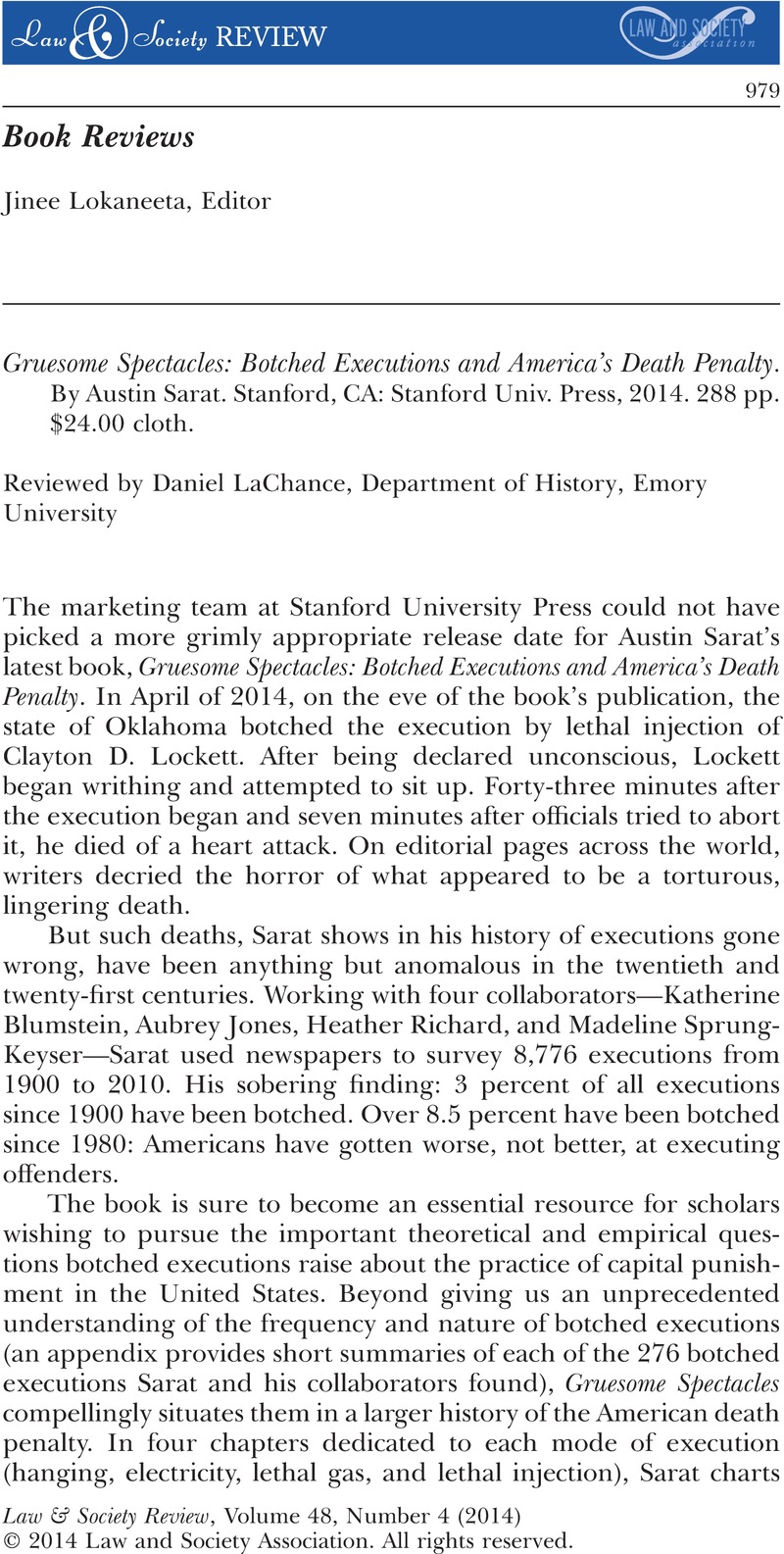No CrossRef data available.
Article contents
Gruesome Spectacles: Botched Executions and America's Death Penalty. By Austin Sarat. Stanford, CA: Stanford Univ. Press, 2014. 288 pp. $24.00 cloth.
Review products
Gruesome Spectacles: Botched Executions and America's Death Penalty. By Austin Sarat. Stanford, CA: Stanford Univ. Press, 2014. 288 pp. $24.00 cloth.
Published online by Cambridge University Press: 01 January 2024
Abstract
An abstract is not available for this content so a preview has been provided. Please use the Get access link above for information on how to access this content.

- Type
- Book Review
- Information
- Copyright
- © 2014 Law and Society Association.
References
Bessler, John D. (2003) Legacy of Violence: Lynch Mobs and Executions in Minnesota. Minneapolis: Univ. of Minnesota Press.Google Scholar


